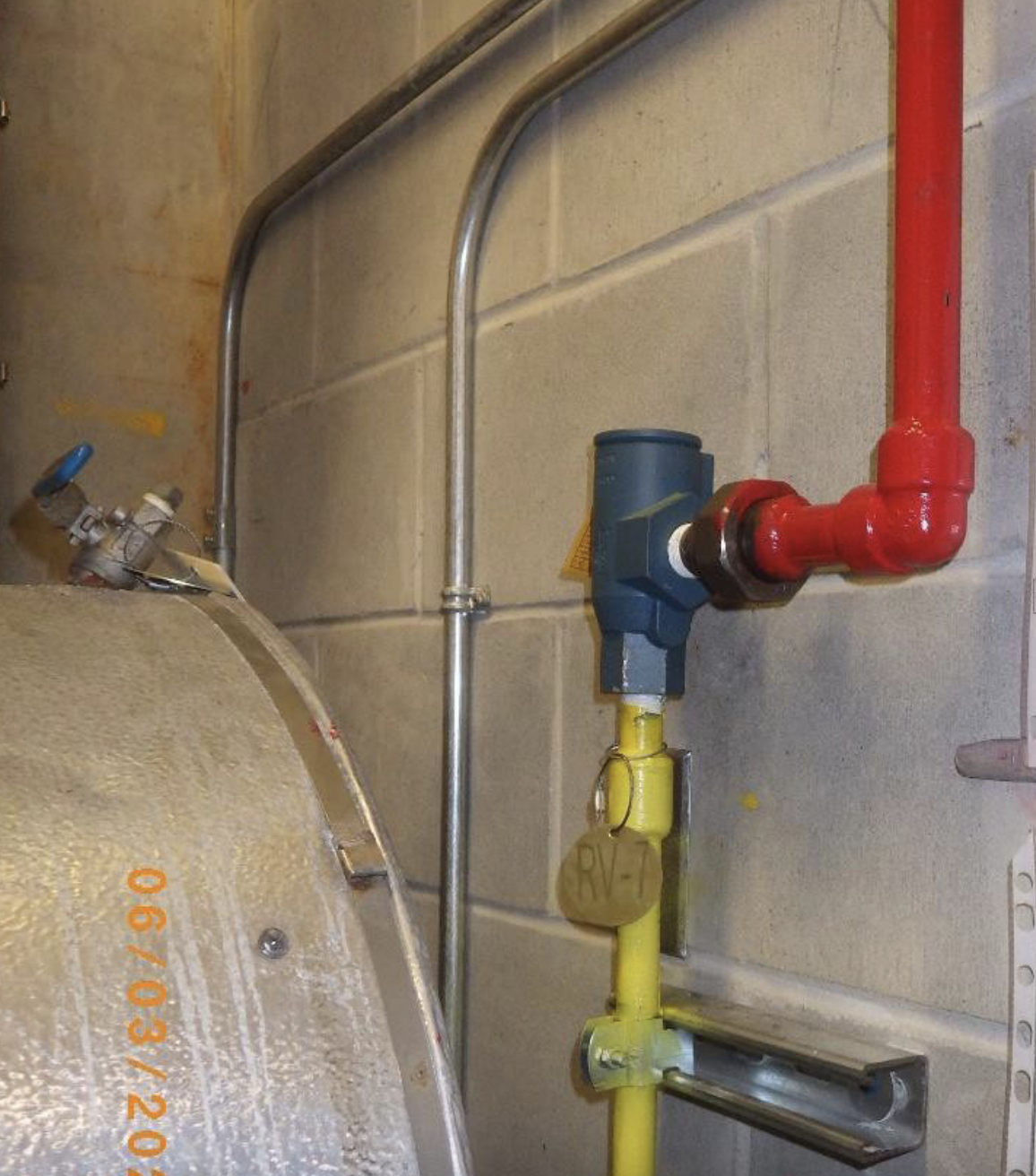 This ammonia refrigeration system for the ice rink had been shut down, and the full ammonia charge (800 pounds) was being stored in the chiller, attached surge vessel, and the oil pot. Three (3) days before the incident, a contractor was doing maintenance on the brine system to install a pH sensor in the brine pump discharge piping upstream of the pump’s discharge isolator (Image 4). When the job was finished, the contractor had only partially de-isolated the equipment, leaving the brine pump suction valve closed, tagged, and locked out (Images 2 and 3).
This ammonia refrigeration system for the ice rink had been shut down, and the full ammonia charge (800 pounds) was being stored in the chiller, attached surge vessel, and the oil pot. Three (3) days before the incident, a contractor was doing maintenance on the brine system to install a pH sensor in the brine pump discharge piping upstream of the pump’s discharge isolator (Image 4). When the job was finished, the contractor had only partially de-isolated the equipment, leaving the brine pump suction valve closed, tagged, and locked out (Images 2 and 3).
On the day of the incident, the facility staff started the brine pump as part of the Preventative Maintenance (PM) schedule and was unaware that the pump suction valve was still in the closed position. After 4 hours with the pump running, the brine fluid temperature increased to 111 Deg. F (44 Deg. C) – this raised the liquid ammonia temperature that was stored in the chiller.
The increase in temperature caused an increase in the ammonia systems pressure to the point the safety valve on the oil pot (Image 5) opened at 250 pounds per square inch (psi), discharging ammonia into the vent stack and to the outside air (Image 7). The oil pot safety valve was the first and only safety valve to open. The system pressure forced ammonia liquid out of the chiller, through the oil pot connected to it, and into the vent stack.
NOTE: When the cooler ammonia gas mixed with the surrounding air, the ammonia cloud dropped to the ground level instead of rising upward as expected on a warm day. The ground-level ammonia cloud then entered the machinery room through open louvers of the machinery room ventilation intake.
